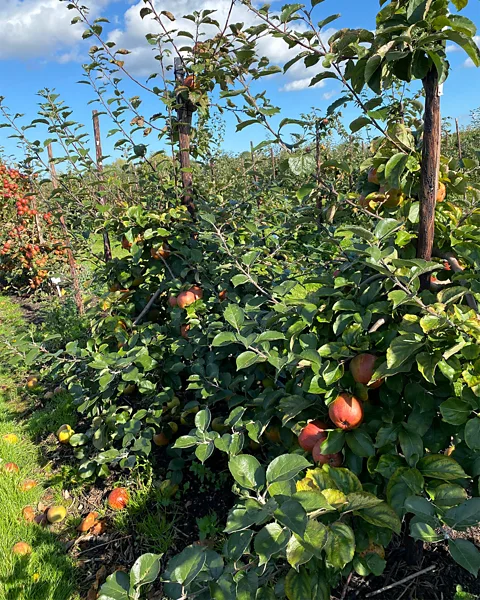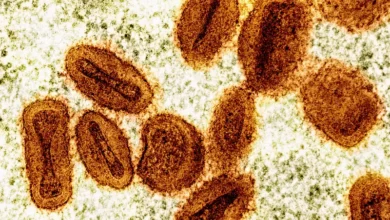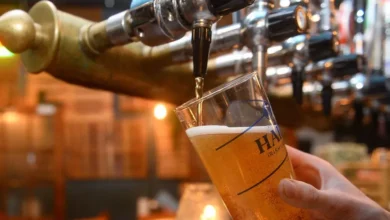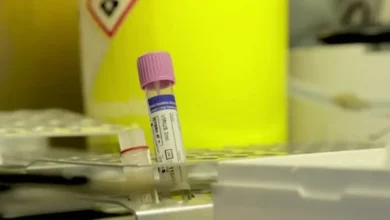The ‘apple library’ with a lost world on its limbs

The explosion of crisp, commercial apple varieties in the last century doomed many other breeds into obscurity. But in a field in Kent in the UK, some of them live on.
A few miles from the sea in Kent in the south of England, hedges of hazel, ivy and briar stand like ramparts separating kingdoms of fruit.
In one field are quinces, dense as golden anvils. Nearby are grey medlars, hard and sour. Pears gleam through red leaves. But the real stars are the apples – more than 4,000 trees, of more than 2,000 varieties. Their fruit clusters along wand-like branches and carpets the ground in a fragrant layer of softly rotting flesh. They smell of a thousand warm afternoons spent snacking in a hammock or up a tree. I kneel under the branches of a particularly laden tree to find the label with the name. It reads, aptly: “Weight.”
This is the United Kingdom’s National Fruit Collection, a living repository of apples once grown in the British Isles, as well as other fruit. It is not the only apple library out there. The USDA’s Plant Genetic Resources Unit in Geneva, New York, and New Zealand’s Plant & Food Research’s collection, among others, host thousands of apple varieties.
But unlike those collections, which include wild relatives of apples, collected in Kazakhstan or on salty beaches in Alaska, to aid apple breeders in search of new traits, this collection is a record of the British love affair with the fruit. “There’s a history of apple production here,” says Matthew Ordidge, a senior research fellow at the University of Reading near London and the nation’s curator of apples. In the lively café at the collection at Brogdale Farms in Faversham in Kent, he recalls a proclamation made a 100 years ago by apple enthusiast Edward Bunyard: “No fruit is more to our English taste than the apple.”
Be that as it may, just a handful of apple varieties are grown commercially in Britain now. “Apple fruit production in the UK is not that big a business,” explains Ordidge. “We only produce somewhere around 35% of home produce; we import the rest.” Even the apples grown domestically are often of varieties from elsewhere, like Gala (from New Zealand), Jazz (also New Zealand) and Cameo (from the USA).
This state of affairs dates to the 1970s and 1980s, when imported apples like French-grown Golden Delicious stormed the supermarkets. When the dust settled, most English apples were no longer commercially viable.
However, once orchardists in the UK grew vast quantities of the fruit – at the end of the 19th Century there were more than 20,000 acres (81 sq km) of apple orchards in Devon alone – and what’s intriguing is that the genes of those trees, whether they were Duchess of Oldenburg or Cox’s Orange Pippin, live on unchanged in these fields in Kent.
Now that the British apple is more of a curiosity than an industrial powerhouse, the collection has taken on another role
Because apples do not breed true, planting an apple seed will not get you a tree much like its parent. Instead, for thousands of years, people have used grafting to hang on to apple varieties they like, taking a cutting from an old tree and growing it onto a new set of roots. That means that each apple tree is a clone of a long-ago progenitor. “Some of these fixed genotypes are presumably as old as the Roman period,” says Nicholas Howard, a geneticist at Fresh Forward in the Netherlands who has drawn heavily on the collection at Brogdale Farms in his research. The Romans, when they invaded the British Isles two millennia ago, are said to have brought domesticated apples with them.
The original purpose of the UK collection, founded about 100 years ago, was to support British apple breeders and growers. But now that the British apple is more of a curiosity than an industrial powerhouse, the collection has taken on another role. The wide array of once-beloved fruits have had portions of their DNA sequenced, and they are part of efforts by scientists to make a genealogy of all apples.
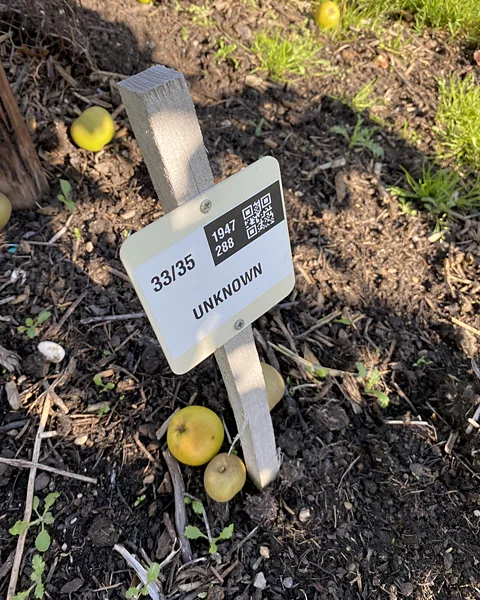
This is trickier than you might think: Ordidge and his colleagues discovered in 2018 that many of the enormous, nearly football-sized apples in the collection are in fact carrying not two sets of chromosomes, but three, a condition called triploidy, which complicated early attempts to build a tree.
But Ordidge, Howard and their colleagues have made great strides. A rarely grown French variety called Reinette Franche is a veritable Where’s Wally of apples, they’ve found. “Right up front is an ancient cultivar, maybe from the Middle Ages or so, from France, and we’re finding that it’s related to everything,” Howard says.
They have traced the parentage of the Cox’s Orange Pippin, finding its closest ancestors to be Rosemary Russet, Nonpareil and Margil, and revealing that it is a cousin of the celebrated Blenheim Orange, a colossal apple discovered growing against the wall of Blenheim Palace’s park more than 200 years ago. “Each of these papers is building upon one another, to put together a large manuscript on how all the world’s apple cultivars are related,” says Howard.
Even as scientists pore over these apples’ genes, assembling the backstory of the fruit, the UK collection is getting ready to welcome a few old friends – probably, in fact, old relatives. Out in the fields, as Ordidge and I wander through trees festooned with red and yellow fruit, he reveals that more than 20 apple varieties saved from oblivion by the Marcher Apple Network, a group of heritage apple enthusiasts in the Welsh Marches, will be planted soon alongside their brethren in Kent.
These apples range in flavor from mild to tart, their flesh is cream-coloured or greenish-white, and their names – Black Gilliflower, Bridstow Wasp, Eggleton Styre, Jolly Miller, and more – read like poetry.
We peer down the rows, discussing where the new trees will take up residence. I stop by a lush little tree, generously covered, and pluck a fruit, its crimson blush glowing in the afternoon sun. It’s gently sweet, surprisingly crisp, a reminder of why apples are so well-loved. Its name? Eden.
